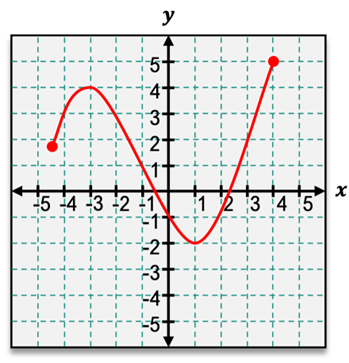Understanding extrema is crucial in analyzing the behavior of functions. Extrema refer to the maximum and minimum values of a function, and they can be categorized into two types: global (or absolute) extrema and local (or relative) extrema. Global extrema are the highest and lowest points of the entire function, while local extrema are the highest and lowest points within a specific region of the function.
To identify a global maximum, we consider a point \( c \) in the function. If \( f(c) \) is greater than or equal to \( f(x) \) for all \( x \) in the function, then \( c \) represents a global maximum. Conversely, a global minimum occurs at point \( c \) if \( f(c) \) is less than or equal to \( f(x) \) for all \( x \). For example, if the highest point of a function is at \( (-3, 5) \), we can state that the global maximum is 5 at \( x = -3 \). Similarly, if the lowest point is at \( (-5, -5) \), this represents the global minimum.
Local extrema, on the other hand, focus on a smaller section of the graph. A local maximum occurs at point \( c \) if \( f(c) \) is greater than or equal to \( f(x) \) for all nearby \( x \) values. For instance, if a point at \( (2, 24) \) is higher than all nearby points, it is a local maximum. A local minimum is identified when \( f(c) \) is less than or equal to \( f(x) \) for all nearby \( x \) values, such as a valley point at \( (1, 1) \) that is lower than its surrounding points.
It is important to note that some points can be both global and local extrema. For example, if a global maximum is also the highest point in its immediate vicinity, it qualifies as both. However, endpoints of a function can be global extrema but typically do not qualify as local extrema due to their nature as boundaries. This distinction can vary based on conventions used in different courses, so it is advisable to confirm the specific guidelines with your instructor.
In summary, recognizing the differences between global and local extrema enhances our understanding of function behavior, allowing for more effective analysis and interpretation of graphs.





